Rare Rides Icons: The Lincoln Mark Series Cars, Feeling Continental (Part XXXII)


We return to our Lincoln Mark series today, and the newly Panther-tized Mark VI coupe and sedan. We’ve already examined the exterior differences between Marks V and VI, as Lincoln designers attempted to replicate the successful looks of their late Seventies PLC with much less length and width available. Design freedom was additionally hampered by new platform sharing with the 1980 Continental, for which the Mark VI basically served as a top trim. Today we’ll check out the Mark’s newly modernized interior.
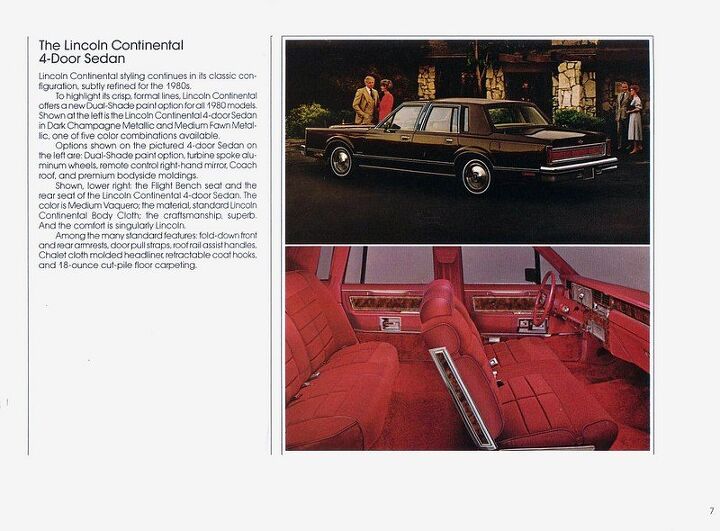
There was quite a lot of modernizing that needed to happen, in all honesty. Recall the last Mark V of 1979 rode on the same platform as the Mark IV, which was shared with the Thunderbird from 1972 to 1977. Lincoln didn’t want to mess with success (or spend money), and it made very few changes to the Mark interior across the two generations that ran over seven model years.
In 1980 the smaller, narrower Mark made evolutionary interior changes rather than revolutionary. The dash shape was the same rectilinear one as before, separated into two clear sections for the driver and passenger. In front of the driver of 1980 were the same familiar squared-off instruments, newly united behind a single pane of plastic. Previous Marks went for a separate binnacle approach where each gauge had its own cover.

Climate controls previously to the left of the steering wheel were relocated to a position that made more sense in the center of the dash. In their new location, climate levers replaced the separate Chronometer and mileage indicator of 1979. The clock was relocated into the gauges and became a standard analog design (instead of the previous barrel look), while the mileage display migrated to the center gauges.
The Mark V’s warning lights - previously spread above the instruments in a single file line - migrated to the left of the instruments and were placed in a stacked grid arrangement. There was more visibility to gauges and lights via a new steering wheel, which made the leap to a four-spoke design. Previous Marks used only two-spoke wheels.

The dash in front of the passenger wasn’t much different in the Mark VI, and there still wasn’t much to look at. A larger glove box lid offered more generous storage space, and meant the wood trim across the passenger side of the dash was much less than before. Continental Mark script vanished from the passenger side of the dash and was replaced with “Mark VI” lettering that was not very noticeable.
The Mark’s wood trim was slightly less prevalent than before, as instrumentation grew larger and overall available surface area was less. The wood tone itself was a bit more subtle and had a darker and more even grain than before. Effectively, it looked less like a burled sideboard in 1980 than in 1979.

Door panels reflected a more modern design in 1980, too. Taller doors meant a smaller window opening, as the Mark was forced to share its roofline with the more formal Continental. The door panel itself had more curves to it than before and sported more wood trim than in 1979. On some trims, there was a whole new wood panel that appeared on the lower half of the door. The grab handle previously located in the middle of the door was moved to the upper edge and was less noticeable.
Window switches were in the same place as before, and contained in a pod that was almost identical in shape to the old Mark. The door handle moved forward for easier access: In the Mark V, it was located awkwardly astride the seat cushion, which left little clearance for hands.

Upholstery designs varied by trim and year, but generally were slight updates to the extinct Mark V. Basic seat trim was still a vertically ribbed design, and Designer Series cars used various overstuffed pillow top looks. One notable modernization was immediately visible - no more button tufting! The Mark’s classic luggage strap and button tufting look that signified an upper trim since 1973 was no more. It was an interesting development, as right around that time new Japanese luxury cars like the Maxima picked up button-tufted interiors.
Rear seat accommodation of the Mark VI coupe was in the vein of Mark V, though the fit for two adults with shoulder pads was notably tighter than the previous year. Rear seat occupants were treated with outboard armrests and cigarette lighters, and a view of a polished two-tier wood tone setup that carried through from the front doors.
In the Mark VI sedan, rear accommodations were more spacious but less upscale looking. In place of the curved trim panels were standard doors from the Continental. The doors were very square in their design and carried through only one of the two wood trim strips from the front door. As a consolation prize, there was some wood applied to the rear lower corner of the door panel, aft of the interior door pull.

The front doors of the Mark VI sedan were from the Continental sedan and carried a slightly down-market appearance. As the door was shorter than on the coupe, it needed to fit its required components in much less space. Switches and door handles were closer to the front seat cushion, and the armrest was shorter and had a tacky storage compartment.
At this point we’ve revealed the elephant in the room: For the first time, the halo Mark PLC shared an interior with the more basic Continental offering. Differences between the two- and four-door Mark models included a shorter front door, and the different rear seat look as outlined above.
Buyers who looked for the differences between the Mark VI and Continental interiors found there wasn’t much in it. Dash, door panels, trim, buttons, seat design, carpets… the list of identical components went on and on. Calling out the Continental model (from 1981) was a new Town Car plaque in front of the passenger, which meant you weren’t in a Mark VI that looked the same.
Without the plaque on the dash, a deep knowledge of upholstery materials and patterns was required to distinguish between the regular Continental interior and the quite expensive Mark VI. And that’s where we’ll pick up next time, as the Mark VI abandoned the popular Luxury Group trim packages and adopted those of the Continental Town Car instead. But don’t worry, the Designer Series cars made a return! Feeling cynical yet?
[Images: Ford, Dealer]
Become a TTAC insider. Get the latest news, features, TTAC takes, and everything else that gets to the truth about cars first by subscribing to our newsletter.
Latest Car Reviews
Read moreLatest Product Reviews
Read moreRecent Comments
- Zerofoo BYD, a huge Chinese car company, admits that autonomous driving is impossible: https://insideevs.com/news/663811/byd-spokesperson-autonomous-driving-basically-impossible/
- Jagboi The Canadian Mark VI's had the "Electronic fuel injection" badge on the side, but had the Ford Variable Venturi carb. The Canadian brochure for these cars does not have the portion about EFI that the US brochures have. A bit of false advertising for sure.I've seen a number of these cars up to 1983 and none of the Canadian market cars had EFI. The US cars had a crank triggered ignition systenm, the Canadian cars had the Duraspark just like the carbed Ford and Mercury Panthers.
- Syke Back when BMW actually made ultimate driving machines.
- Alan Many Ford designs that are manufactured in China are designed in Australia. Ford just fired hundreds of engineers. That only leaves engineers to keep on designing the Rangers, Bronco, etc.
- Alan Big Al,Seems the author has confused horsepower and kilowatts. Check out what the Aussie Ranger Raptor power output is.The VW Amarok is the 2.3 Eco Boost, I think its about what the author wrote.To be fair, the author may be quoting EU hp.














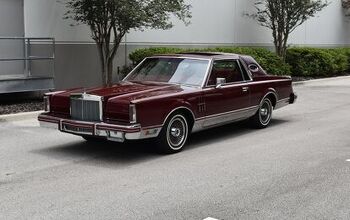
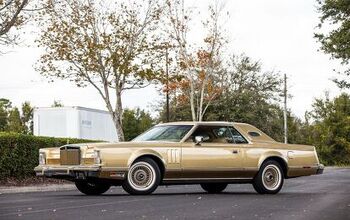
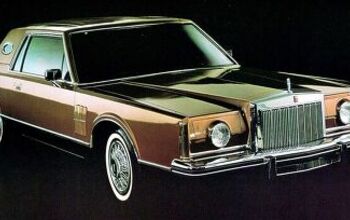
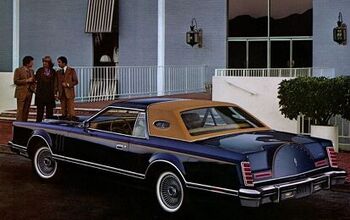
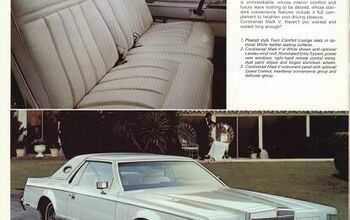

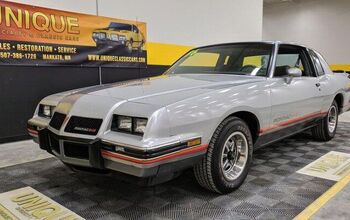


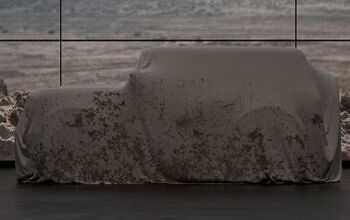

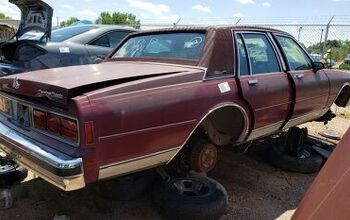
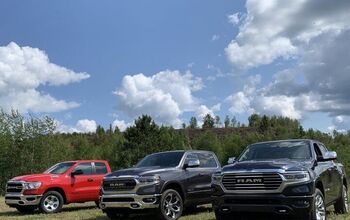


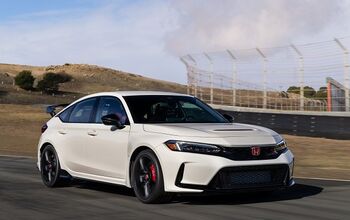


Comments
Join the conversation
Noticed the hood release. On our Mark IV Pucci the hood release was key locked. Not sure if this was standard or an option on the Designer Series. Suppose it was meant to keep the valets from looking under the hood? Of course at that time most autos still did not have an internal hood release. Anyone could just 'pop' your hood. I also believe (my memory is not what it was), that it had an automatic parking brake release that disengaged when the car was shifted into gear? I do remember the distinct noise it made when the parking brake was disengaged, much louder than any other car I had been in at the time.
You still see some of the swagger from past Lincolns in this generation albeit in a smaller package. Great series on the Lincoln Marks and well worth the read.